There are quite a number of articles written on Forbach sugar estate, however many are not correct with respect to the family history of the Staubs. I have gleaned most of the information herein from the presentation given by France Staub in 1994 and the family’s genealogy records.

The picture is of Forbach sugar estate in 1870 and is part of the Rouillard Collection in Curepipe. This was shortly before the last days of the estate, but is the best picture I could find of the original windmill.
Now let us step back in time to when this all started.
Thanks to the success of his shops, he purchased a portion of land in the area now known as Cottage in Riviere du Rempart.
Forbach sugar estate is established. It is named after the village where he was born which is in the French province of Lorraine, near the German border.
Returning to our current story, the initial buildings and houses of Forbach were built by approximately 200 slaves from Mozambique, Madagascar and Mauritius together with a few freed artisans.
Slave camp at Forbach in 1828 (Pitot Collection – Carnegie Library)
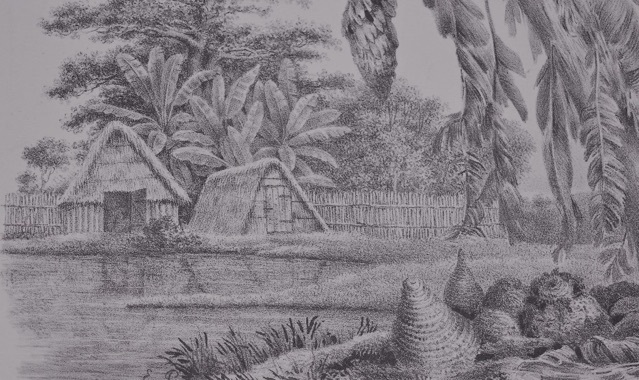
Slavery had not yet been abolished in Mauritius, this would only happen in 1835.
Joseph’s younger brother Jean had just been released from army service and joined to help manage the estate in about 1815. Jean was a second lieutenant and fought in many historic battles such as the Hundred Days and the Battle of Waterloo.
Jean arrives at Forbach estate to find his brother building his windmill. I like to imagine that this tall stone structure must have, at least partly, reminded them of the old castle tower back home.
Joseph unfortunately died quite young, at the age of 45 in 1825. On his death, Jean requests that Nicolas, their other brother, join on the estate.
Nicolas brings his young wife Catherine and their three children to live in Mauritius and they build themselves a house at Forbach where they have 3 further children over the following years.
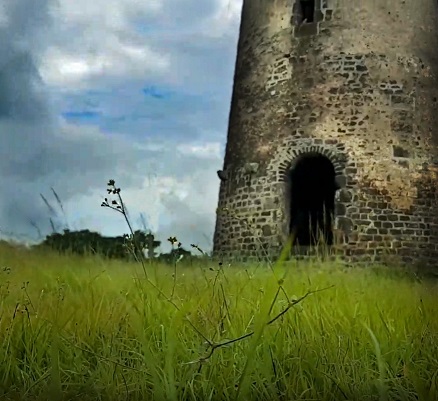
If you would like to see our video from around and inside the windmill and all the other remaining structures at Forbach, click on the video below. Yes I know the thumbnail is a modern car, that is found in Cottage just next door to Forbach. The link will take you directly to the Forbach section of the video though.
Just after we released our video, Bryan’s father Denis sent us a picture of the windmill that they have in Tortula, British Virgin Islands. Oh my, were we amazed that the same thing exists on the other side of the world.
Their windmill is part of the Mount Healthy National Park and has fantastic information on the operations of a tradition sugar mill, complete with wind powered cane crusher.
Needless to say, Tortula is now firmly on our must visit list.
This photo is of the windmill in the Caribbean!
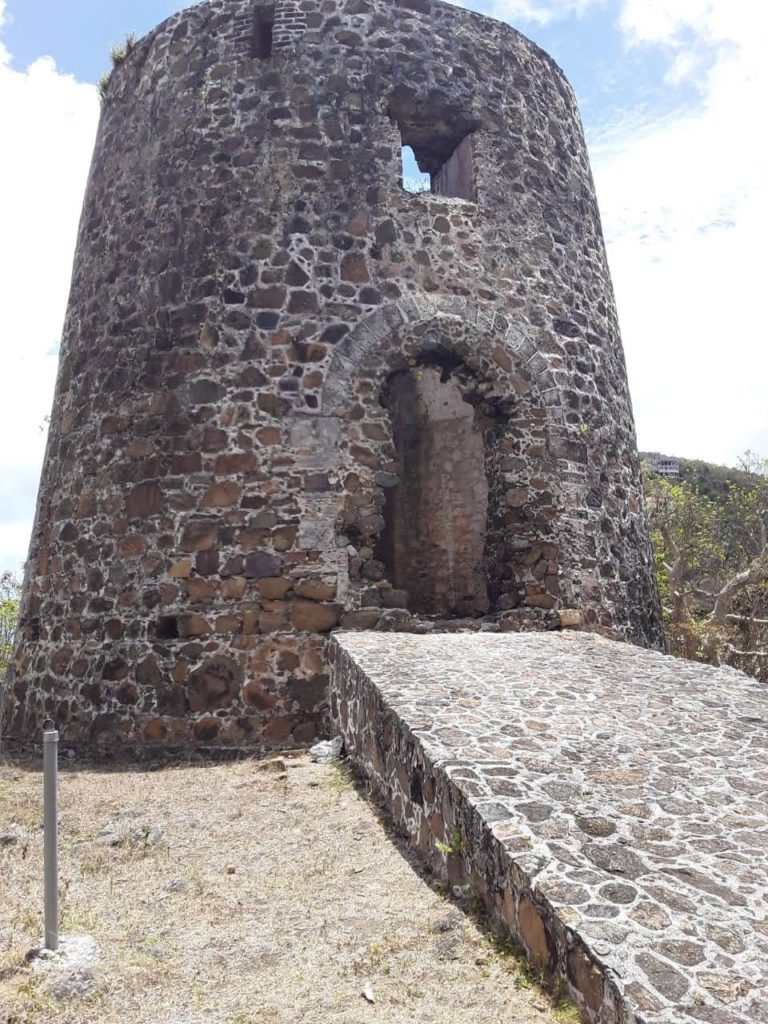

As you can see, the wind power is directed downwards towards the rollers which rotate and crush the canes. Workers stood on the outside and fed canes in one end and gathered the crushed canes on the other (bagasse). I must admit to not knowing why there is a wallflower label and I think it is a rabbit hole I do not want to venture into right now.
The structure is sloped so that the liquid can flow out.
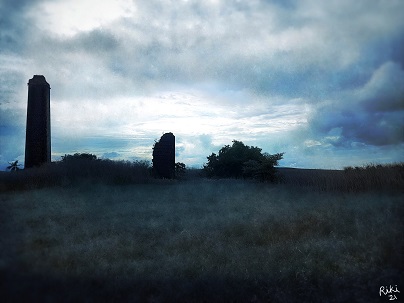
In 1836 tragedy strikes Forbach when Catherine dies at the age of just 47 leaving behind her 6 children, the youngest Jean Baptise only 5 years old.
She had caught cholera while treating one of the new arrivals from India.
The governor at the time, Governor Nicolay, had shortened the required quarantine period from India as, would you believe, his mail was taking too long to reach him.
Nicolas is undoubtedly distraught and leaves with the children for France.
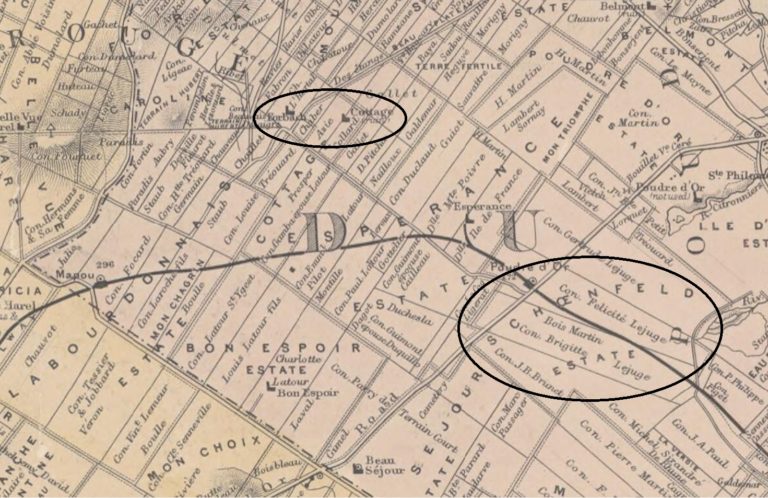
Jean Staub and his wife decide to stay in Mauritius but sell Forbach in 1842 to Aristide Aubin. I assume the estate was jointly owned by the brothers and Nicolas required some money for his move to France.
Jean purchases Schoenfeld estate nearby in 1837 and builds a house there. Two of his daughters have married and Jean purchases Bel Ombre estate in 1850 to secure a future for his sons-in-law. Bel Ombre is quite far away, in the Savanne province. Perhaps Jean didn’t much care for these sons-in-law or maybe he wanted to retire in peace.
Unfortunately in 1856 Jean dies, just before the wedding of his youngest daughter. The family sells Schoenfeld and later on Bel Ombre and moves to France.
They erect a marble monument at Pamplemousses which reads, translated into English of course: “The children of Jean Staub raised this monument to their father and their uncle. Here lie two brothers who cordially loved this country” (Joseph, the original owner was buried in Port Louis which is why I assume he is not included on this monument)
Unfortunatley nothing remains of Schoenfeld, apart from a bypass road named after the estate and presumably built to bypass where it once was.
If you would like to see all the remaining sugar chimneys in Mauritius, check out this blog:
https://letsdiscovermauritius.com/blog/sugar-mills-chimneys-in-mauritius.html
But what of brother Nicolas back in France? In about 1852, Nicolas sends the now 21 year old Jean Baptiste on a voyage from France to Mauritius to collect some of his things which he must have left with his brother.
Nicolas prepares everything for his son’s exciting voyage, but does not count on one important factor.

Do not worry, there is not another tragedy about to befall the family. On board the same ship as Jean Baptiste is the young daughter of Antoine Bertrand, a retired officer.
Her name is Marie Antoinette and Jean Baptiste obviously falls madly in love with the young lady. They are married in 1854 and both decide to live at Baie du Cap in the South of Mauritius, the estate which Antoinette’s father purchased in 1832.
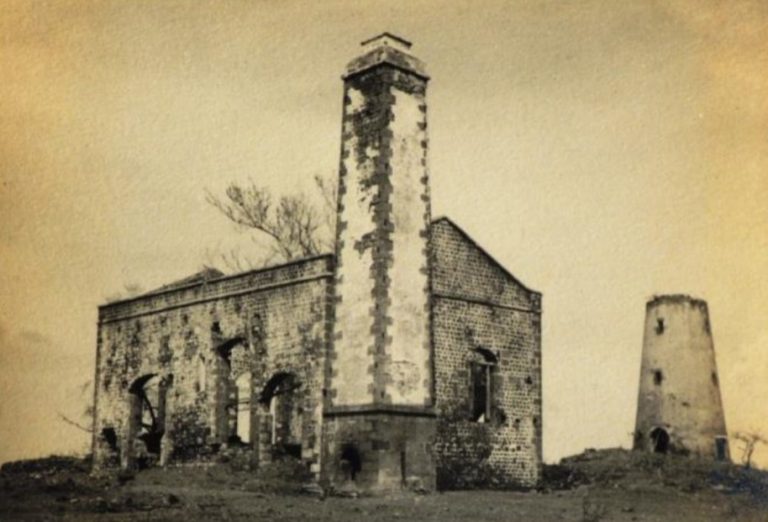

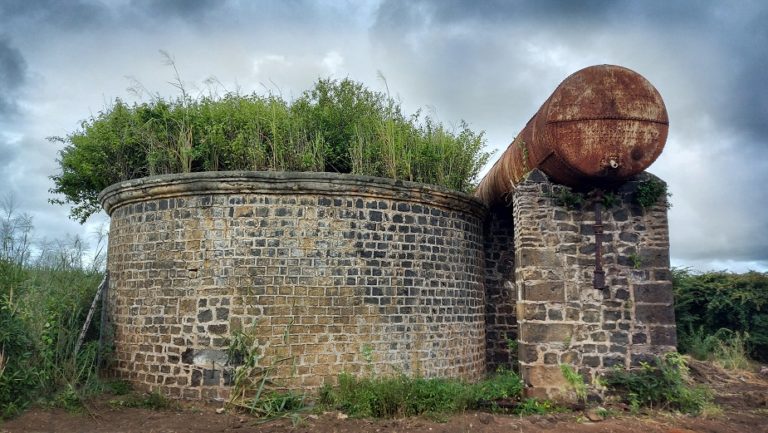
There is also still an old water tank that can be seen as well as the old dairy barn.
I am not sure if we located the dairy barn but there is a very long structure with shuttered windows that perplexed us as to what it’s function could be. You can see this on our video as we drive past, there is nowhere to pull over. It goes on for a long way! If anyone knows what this structure is, please leave a comment.
I have read that there are plans to convert the old barn to be used for the aging of rum in the future.
The descendants of Forbach estate do from time to time visit the estate. There is a great story told by France Staub of one such remarkable visit which, hopefully I have understood correctly to relay here.
In 1975 Lieutenant Alain de Dainville is in Port Louis. He is the Commander of a large aircraft carrier, yes we are now in 1975. He is also, spoiler alert, a Forbach estate descendent but does not know any details of this apart from the name.
A damaging cyclone, Gervaise, has hit the island and his ship receives the call for help. They set of in helicopters to assist with restoring the telephone network. By luck, Alain’s team flies over the North where they see a tower and some people. They land to offer assistance and the pilot enquires where they are. The answer comes back: Forbach.
Alain had found his long lost family on the island. His great-great grandmother is Philippine, sister of Jean Baptiste and daughter of Nicolas.
Visiting the National Heritage Site of Forbach windmill was a great outing. I think a proper sunset from there would provide a beautiful photography location. Be sure to stop in Cottage nearby for some amazing street foods. Also, to find out that similar windmills exist in other parts of the world was fascinating. If you have one in your country, please send us a picture, we would love to hear from you.
Collecting and collating this information takes a lot of time and patience. If you have enjoyed this blog, please consider buying me a coffee.
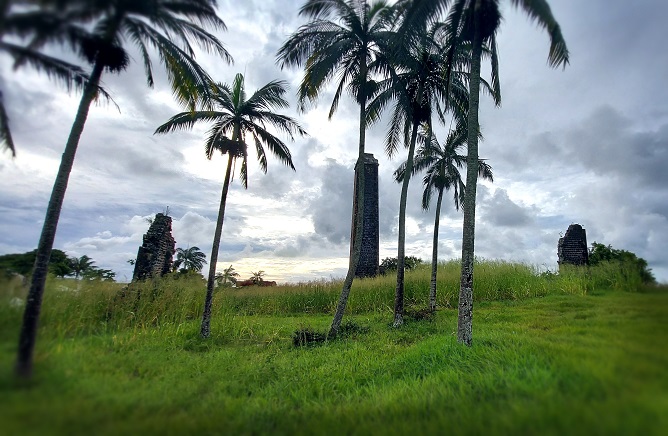
Wow, even better then the bit you let me read. I’ll make you a coffee at home.
Thank you. We try to see it all in Mauritius.
Wow, thank you
thanks